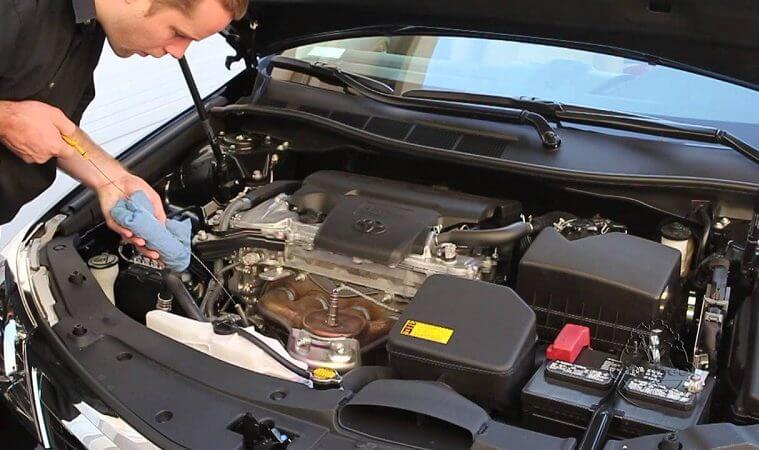
5 Basic Car Repair Tips And Tricks That Everyone Should Know
Most of us have been driving a car or a truck from our teens. Most of our lives are almost unimaginable without a vehicle of our own. So when our vehicle breaks down, we end up being directly affected. Abrupt vehicle break downs turn out to be expensive in every way possible. When our vehicle demands a basic car repair or a quick fix, we often rush to take it to the auto shop. As cautious and careful as it might sound, this is not always necessary. Some repairs are so crucial yet so simple that we can easily perform them at home. This saves us some time and money obviously.
So here are 5 simple fixes to cars you should know about:
1. Adding Wiper Fluid and Changing Wiper Blades
Unobstructed visibility for safe driving is important. Washer fluid helps to make sure that the windshield of your car is free of precipitation and road grime. Fortunately, keeping the tank filled with enough of this refreshing looking yet toxic liquid could not be easier. All you have to do is pop the hood and check for a cap with a sign representing the windshield and dotted lines representing the car wash fluid. For quick spotting, the caps are normally blue or yellow. Pop it off then fill the reservoir.
You’ll need a fresh set of windshield wipers occasionally. Fortunately, switching them, since they basically clip into position, is also a simple job. There’s always a small button you press to release a blade, and other times they slip into a hook at the end of the arm. The blades shouldn’t be too difficult to change out in either case, so give it a try next time they’re smearing rather than wiping.
2. Change a Flat Tire
The most obvious reason why a vehicle is termed “wheels” is because it is one of the most significant aspects of your car. And every once in a while, they will go flat on you. But it does not have to be a big deal to change a flat tire and might potentially be a lifesaving skill to master.
Basic measures include loosening the lug nuts (with a wrench), lifting the car from the ground using a jack stand, removing the lug nuts (and then the tire), putting the spare tire on, squeezing the lug nuts back on, lowering the car, and eventually ensuring that the lug nuts are tight. A simple as that.
3. Jumpstart
Number 3 on the list of things that any driver should be able to do is to jump-start a vehicle with a dead battery. This, of course, includes a couple of jumper cables, a fully charged car or truck (or a portable jump starter), and a little bit of knowledge that we are sharing right here:
- Park the jumper car right next to the car with a dead battery. Ensure that both cars are switched off and then pop their hoods.
- Attach the positive terminal on the stalled battery to one end of the red (positive) jumper cable and link the other red (positive) cable clamp to the good battery’s positive terminal.
- Attach one end of a black (negative) jumper cable to the good battery’s negative terminal and connect the other black (negative) cable to a clean, unpainted metal surface under the disabled car’s hood. Somewhere on the engine block is a good place. Do not connect the negative cable to the negative terminal of the dead battery. Most experts agree to not do this as there’s a chance this could cause a spark and an explosion.
- Now start the car that’s doing the jumping and allow it to run for 2-3 minutes before starting the dead car. Remove cables in reverse order of how they connected them. Keep the jumped car running for at least 30 minutes to give the battery sufficient time to recharge itself.
4. Replacing air filters
One of the most neglected components of your car is air filters. They keep the engine clean from dust and other pollutants. They are inexpensive and easy to repair, so keeping the engine of your car clean is another basic car repair tips skill that you must know.
The measures include:
- First, open the hood.
- Then locate the air filter unit.
- Remove the air filter cover. Some vehicles require tools like a screwdriver to remove the cover while in others, it’s just a few clicks thing.
- Then remove the air filter and wash/vacuum the air filter housing. Make sure that the housing and the seal around its edge are clean and dust-free.
- Then a new filter is inserted and the cover is replaced.
You’re done! Make sure that your filter is changed once every 30,000 miles, or around once every year.
5. Change The Engine Oil
To ensure the smooth running of the vehicle and to extend the lifetime of its engine, you need to check and change your car’s oil periodically. It is easy to keep an eye on the oil. Only make sure that the vehicle rests on a fairly level floor. And if you’ve just parked it, wait a few minutes, as the oil might not have drained completely back into the pan, resulting in a false reading. Then, with a rag or piece of paper towel, take the dipstick out, wipe it off and stick it back into the tube where it came from. Pull it out again, then, and read the stage. You’re good to go if the oil shows between the marks “Low” and “Full”.
One of the most elemental DIY abilities you should have for car maintenance or basic car repair is changing your car’s oil. Of course, it’s a different story if your vehicle’s oil filter and oil drain plug are really difficult to access. Draining the oil by removing the oil drain plug, unscrewing and emptying the oil filter, placing back the oil filter and drain plug, removing the oil filler hole cap, and pouring fresh oil are simple steps. There are hundreds of tutorials online that can make you clearly understand the process on your own.
